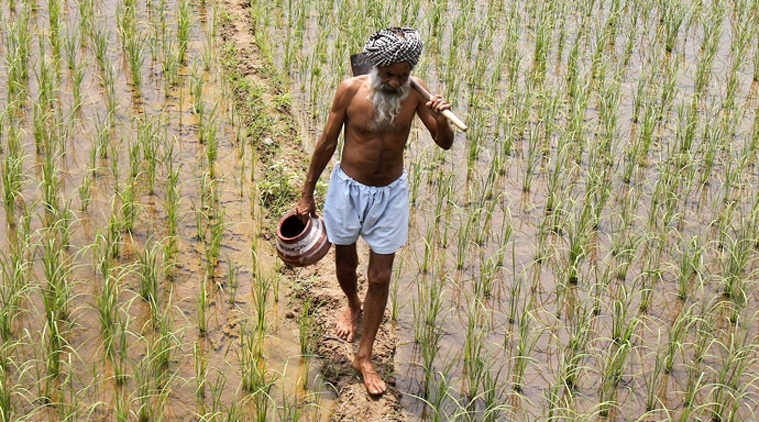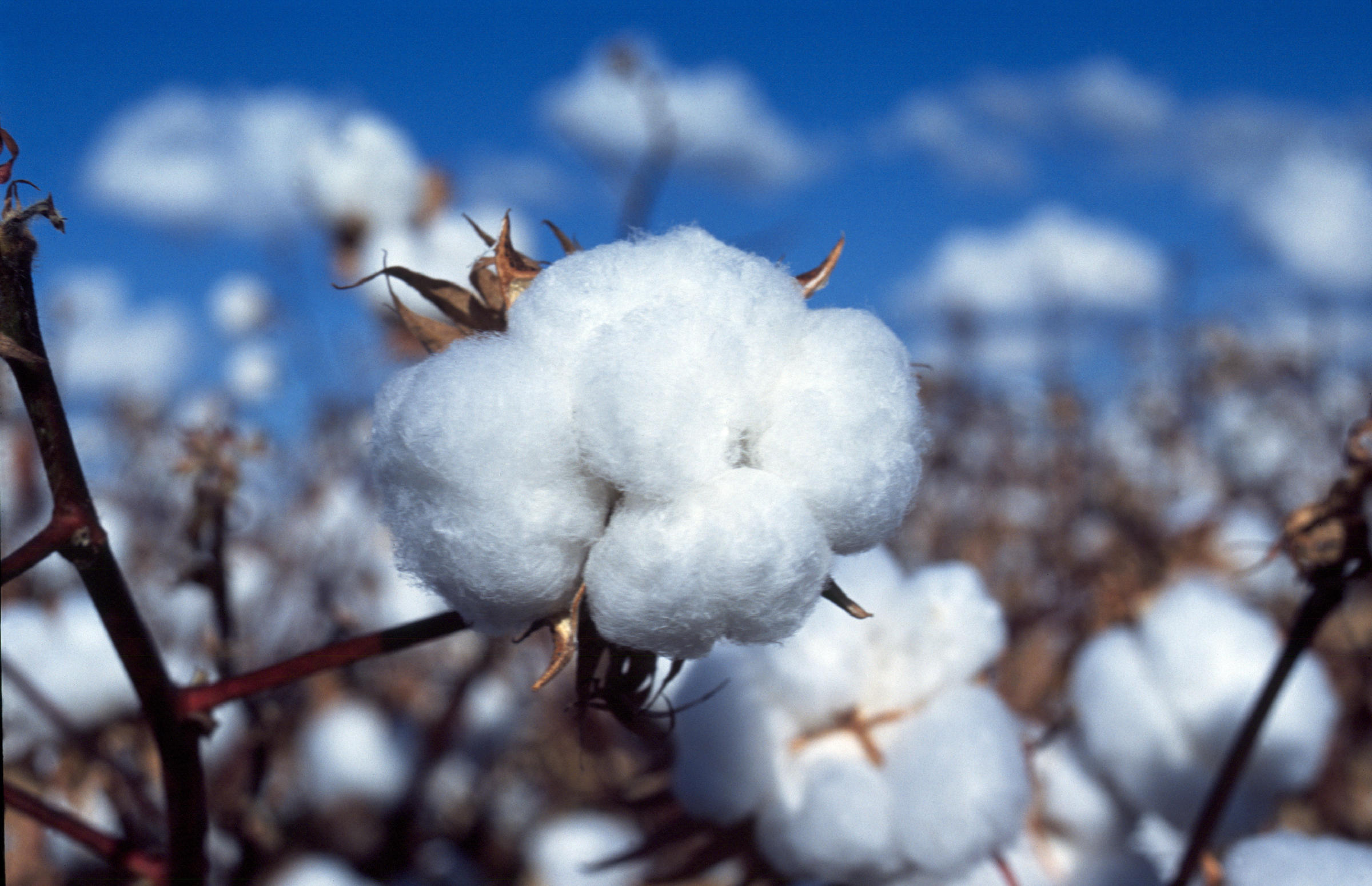what foods use the most water to produce

In the telescopic of Indian agriculture, a variety of crops is cultivated in India due to the vastly distinct weather and soil conditions that are bachelor in diverse topographies across the country. These crops are majorly divided into nutrient grains, cash crops, plantation crops and horticulture crops. H2o is one of the essential resource that are required for proper growth of these crops. The bulk of the farmers are still dependant on growing h2o intensive crops . Irrigation h2o, sectional of atmospheric precipitation and stored wet, is required to meet the consumption rate of a crop during its growth period. Just the corporeality of irrigation water required differs for each institute, not but considering different plants need to survive unlike environments, simply besides because each constitute has its own unique physical features.The rural Indian population is largely dependent on agriculture as its primary source of livelihood. Agriculture is ane of the major contributors to India's GDP, with an 18% share (KPMG written report), this population plays an integral role in the Indian Economy.
In this regard, we would like to highlight some of the virtually water intensive crops that are popularly grown by Indian farmers
Rice
Rice acts as one of the most of import staple food in the world and Republic of india is ane of its largest producers. However, its production requires a groovy quantity of water. The rising in population has led to an increment in the need for food crops; in plow escalating the amount of water required for irrigating them. Traditional farming needs 3,000 to 5,000 liters of water to produce a kilo of rice . The crop requires flooded soil for its growth every bit it suppresses weed growth and increases the uptake of nutrients from the soil for ameliorate yield. In India, information technology is grown in Due west Bengal, Uttar Pradesh, Andhra Pradesh, Punjab, Bihar, Orissa, Chhattisgarh, Assam, Tamil Nadu and Haryana .
Cotton
Also known as 'white gold', Cotton fiber is a Kharif crop. Bharat is one of the largest producers as well equally exporters of cotton yarn. On an average, India uses 22,500 liters of water to produce 1 kg of cotton . Most Indian cotton wool is grown in drier regions. States cultivating this crop the most are Gujarat, Maharashtra, Andhra Pradesh, Haryana, Madhya Pradesh, Punjab, Rajasthan, Karnataka, Tamil Nadu and Orissa .
Sugarcane
Bharat is the 2d largest producer of this popular cash crop. Information technology has 1 of the longest growing periods and its growth can come to an untimely halt if there is a shortage of water. Generally crops require 300-500mm of rainfall/water for their growth; nonetheless, sugar cane requires i,500-two,500mm of rainfall/water to complete the growth bike. Therefore, the crop requires 1500-3000 liters of water to produce a kilo of sugarcane! In India, Uttar Pradesh, Maharashtra, Karnataka, Tamil Nadu, Andhra Pradesh, Bihar, Gujarat, Haryana, Uttarakhand, and Punjab are the major producers of this crop.
Soya
With 12 one thousand thousand tons of production; Soybean is one of the fastest growing crops in Bharat . The crop is considered to be well suited for Indian soil. A major source of poly peptide, vegetable oil, and animal feed, the ingather requires around 900 liters of water for 1 kilo worth produce. This crop is majorly grown in Madhya Pradesh, Maharashtra, and Rajasthan.
Wheat
After the Green Revolution, wheat production in India has been on the rising. After rice, wheat is the near consumed crop by the Indian population. Non just that, our country is also ane of the largest exporters of all varieties of wheat, making united states the 2nd largest producer of the crop worldwide. Notwithstanding, the fact that cannot be ignored is that 900 litres of water is required to produce 1kg of wheat . In Republic of india, this crop'south production is mainly in the northern region – Uttar Pradesh, Punjab, Madhya Pradesh, Haryana, Rajasthan, Bihar, Gujarat, Maharashtra, West Bengal and Uttarakhand are the major producers of this crop.
We tin, therefore, see how Economical growth is indirectly dependent on fresh water. At that place needs to be an agreement that for greater agricultural productivity, for at that place to be a better harvest, there needs to be plenty water. If water is used upward by such water-intensive crops, in that location will come up a time when there will exist no water for agriculture. Most of these crops are grown in dry areas, which practise not receive ample rainfall, and the farmers are either dependent on other freshwater sources or groundwater pumps. In a country like Republic of india, where 76 million people do not accept access to safe drinking water , using upward a neat amount of water in such crops seems unfair. Water intensive agronomics takes away liters of water that can be used to assistance a meaning population survive. Cultivation of these crops has even endangered some areas of water scarcity. In fact, due to intense drought conditions twelvemonth after yr, there have been multiple pleas by local officials for farmers to switch to pulses and oilseeds in Rampur. Tamil Nadu government has also asked farmers to switch to millets and pulses from rice, as the new crops will use less water and are every bit nutritious. However, in some areas, switching to different crops cannot be considered an platonic solution considering of climatic limitations, soil requirements etc, therefore, a switch to meliorate irrigation techniques like drip irrigation can be taken up. Furthermore, groundwater irrigation pumps are either dependent on irregular grid electricity or diesel fuel, causing additional strain on the current environmental weather. Solar powered pumps can be considered a model solution to overcome that problem. The h2o needs of these crops need to exist considered to formulate an firsthand solution.
Our water woes tin can be addressed by our ain everyday utilise of water. Salve water earlier it's too late.
Written By: Prakriti Sharma
Edited By: Anirban Banerjee
Source: https://claroenergy.in/5-most-water-intensive-crops/




